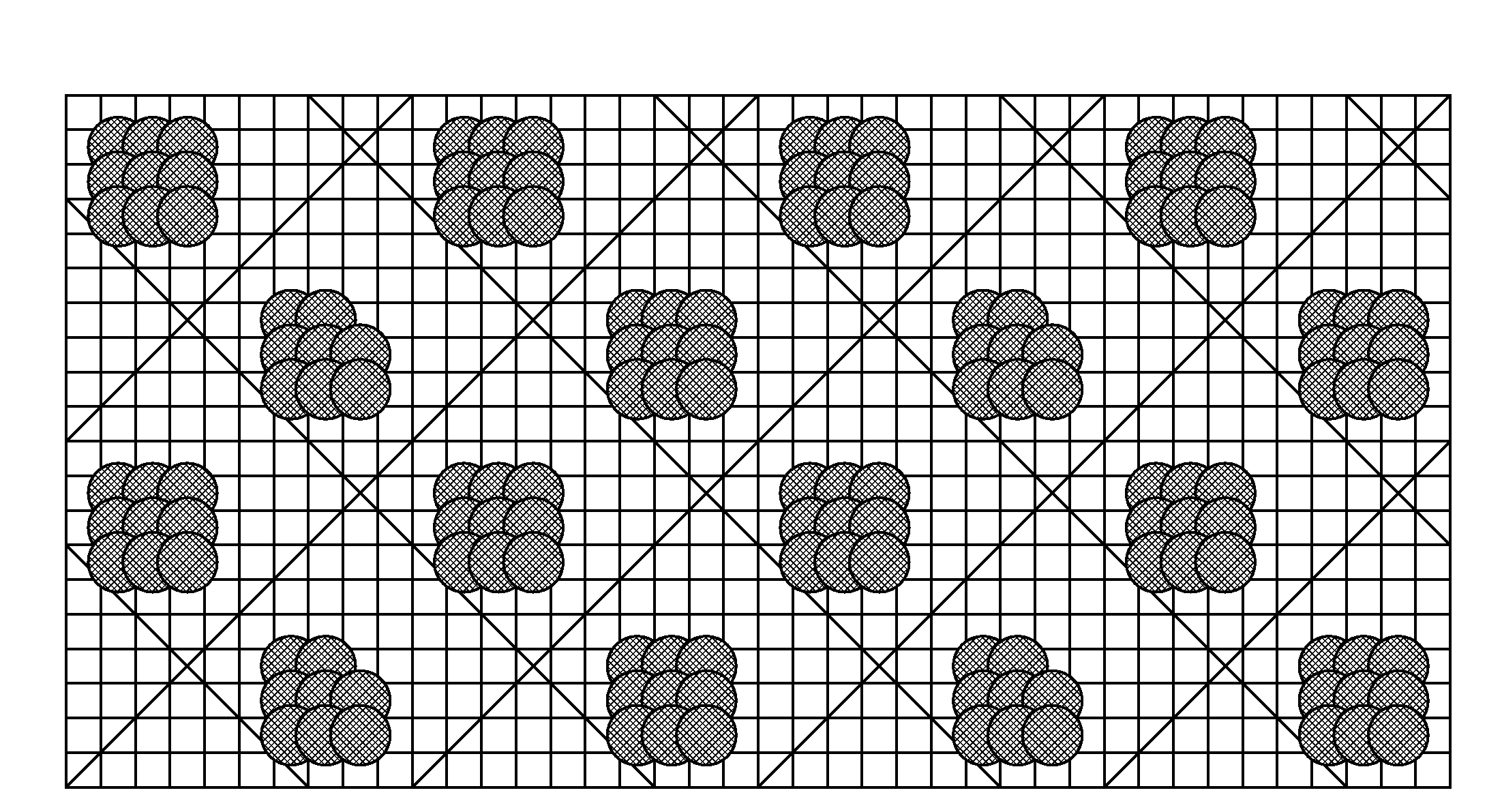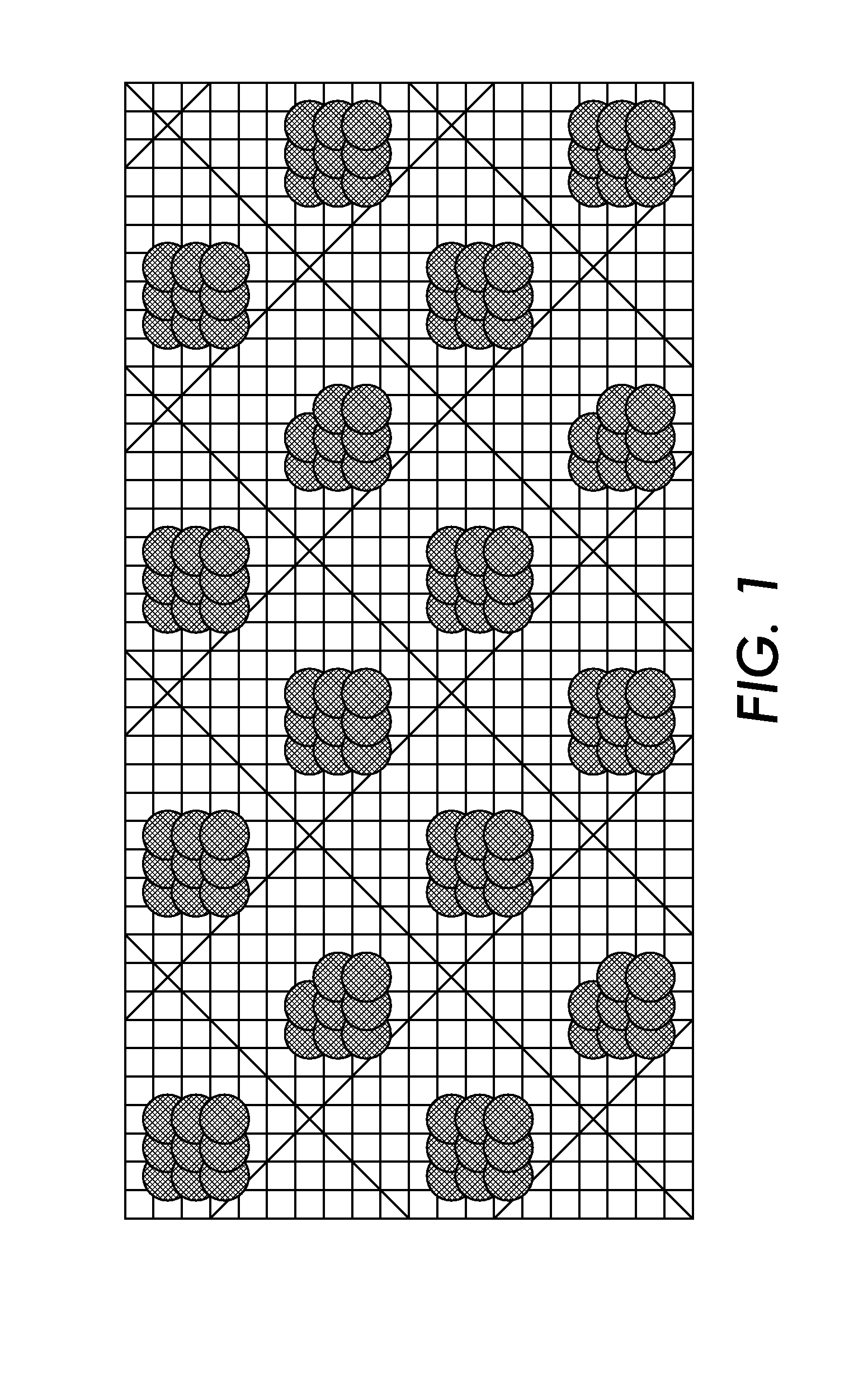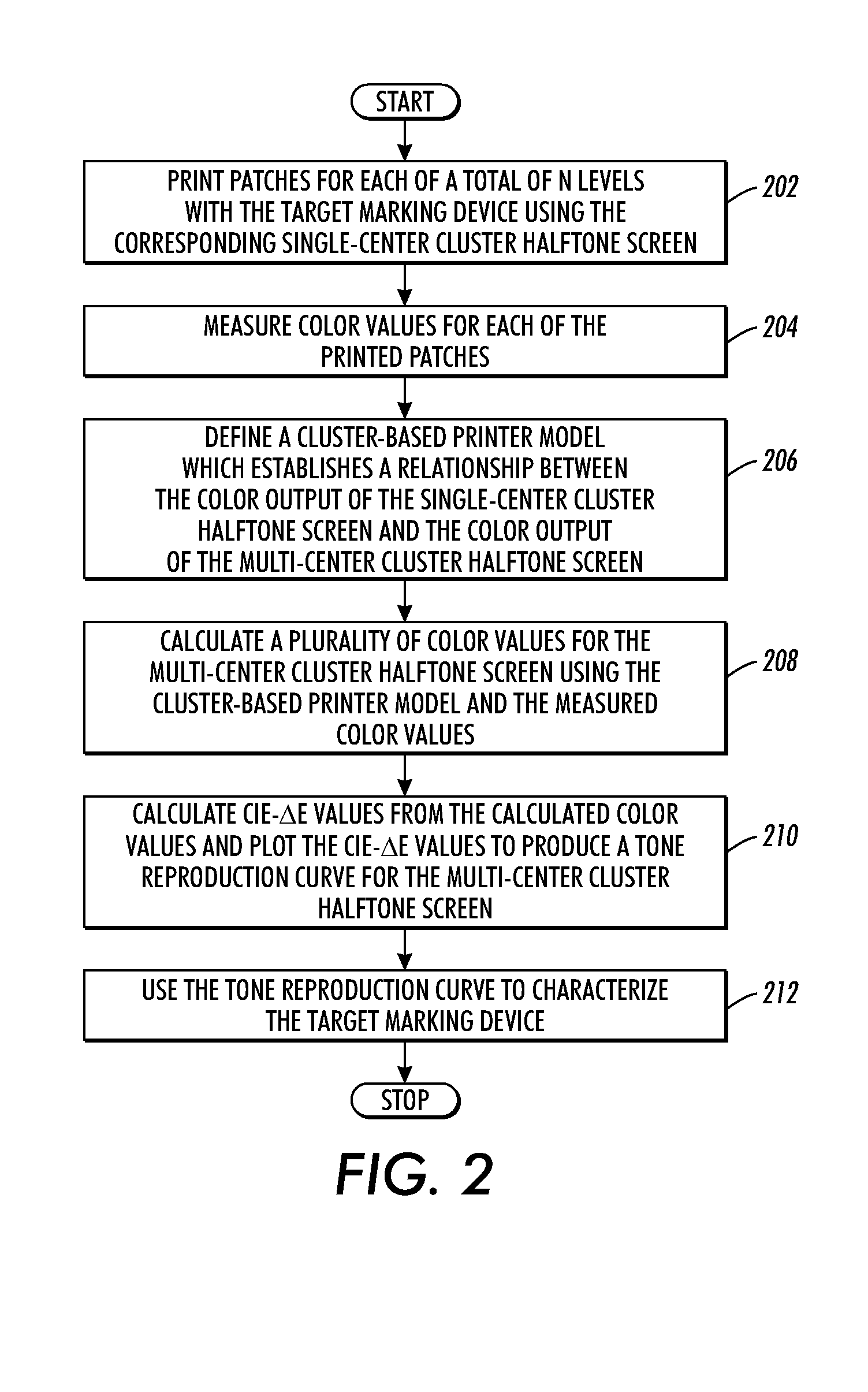Cluster-based printer model for tone reproduction curve estimation
a cluster-based printer and tone reproduction technology, applied in the field of clusters, can solve the problems of inability to provide enough simulated contone levels, inability to accurately measure raw data, and limited use of single-center halftone screens, so as to reduce measurement, reduce measurement, and improve accuracy.
- Summary
- Abstract
- Description
- Claims
- Application Information
AI Technical Summary
Benefits of technology
Problems solved by technology
Method used
Image
Examples
Embodiment Construction
[0019]What is provided are a system and method for efficiently and accurately estimating the complete TRC for a color marking device equipped with a multi-center cluster halftone screen which has a similar halftone tiling geometry and a similar growth specified by a corresponding single-center cluster halftone screen. The present method introduces a cluster-based printer model which establishes a relationship between a color output of a single-center cluster halftone screen and a color output of a multi-center cluster halftone screen. As will be described more fully herein, the present cluster-based printer model accurately estimates the complete TRC for a multi-center cluster halftone screen using the measurements from a corresponding single-center cluster halftone screen.
[0020]It should be understood that one skilled in this art would be readily familiar with many facets of color science such as, but not limited to, tone reproduction curve generation, color measurement and measuri...
PUM
 Login to View More
Login to View More Abstract
Description
Claims
Application Information
 Login to View More
Login to View More - R&D
- Intellectual Property
- Life Sciences
- Materials
- Tech Scout
- Unparalleled Data Quality
- Higher Quality Content
- 60% Fewer Hallucinations
Browse by: Latest US Patents, China's latest patents, Technical Efficacy Thesaurus, Application Domain, Technology Topic, Popular Technical Reports.
© 2025 PatSnap. All rights reserved.Legal|Privacy policy|Modern Slavery Act Transparency Statement|Sitemap|About US| Contact US: help@patsnap.com



